Steven Lyle Jordan's Blog, page 47
June 3, 2014
Rage against the dying of our future
 Author Chike Deluna has some good observations in his blog post, Has modern Sci Fi strayed too far from its roots? In it, he points out that science fiction in movies and television have undergone a major shift in recent years, from scientific discovery and social introspection to militaristic obsession. And I have to agree with him.
Author Chike Deluna has some good observations in his blog post, Has modern Sci Fi strayed too far from its roots? In it, he points out that science fiction in movies and television have undergone a major shift in recent years, from scientific discovery and social introspection to militaristic obsession. And I have to agree with him.
Chike states that sci-fi is not optimistic about our future any more, citing a common theme in which stories are dominated by military themes, and are more about physical conflict than emotional struggle. The recent movies, for instance, which buck this trend—such as Solaris, Moon, Gattaca, Robot and Frank and Cloud Atlas—are far outnumbered by movies featuring video-game-like over-the-top battles.
 Chike also cites some recent productions, most notably (to my mind) the de-imaginings of J.J. Abrams’ Star Trek, which have drained every last bit of scientific curiosity and social commentary from a venerable franchise and replaced them with cartoon violence splashed with distracting lens flare, characters reduced to Dawson’s Creek rejects, and stories that would make Ed Wood blush. The first Abrams Star Trek movie had its perfectly defining moments when the terrorist Nero yells, “Fire everything!” at the Enterprise… and not long afterward, when the defeated Nero refuses to surrender to Kirk, Kirk orders the Enterprise to fire everything right back. The once-proud, self-aware and ground-breaking Star Trek has been reduced to petulant children playing space battles… the only thing missing is the pew-pew sounds when they fire their phasers. (This is why I’ve said in a previous post, if Star Trek has been reduced to this, it’s time to officially retire the franchise.)
Chike also cites some recent productions, most notably (to my mind) the de-imaginings of J.J. Abrams’ Star Trek, which have drained every last bit of scientific curiosity and social commentary from a venerable franchise and replaced them with cartoon violence splashed with distracting lens flare, characters reduced to Dawson’s Creek rejects, and stories that would make Ed Wood blush. The first Abrams Star Trek movie had its perfectly defining moments when the terrorist Nero yells, “Fire everything!” at the Enterprise… and not long afterward, when the defeated Nero refuses to surrender to Kirk, Kirk orders the Enterprise to fire everything right back. The once-proud, self-aware and ground-breaking Star Trek has been reduced to petulant children playing space battles… the only thing missing is the pew-pew sounds when they fire their phasers. (This is why I’ve said in a previous post, if Star Trek has been reduced to this, it’s time to officially retire the franchise.)
And Trek is only the point of the phalanx of movies and shows that assume that space is full of evil aliens, and we’ll be too busy fighting for every scrap of planetoid to do other things, like, I dunno… learn something.
 But can we only blame the movie and TV makers? After all, the public is going to these movies and watching these shows. Further, they’re buying up books about space conflicts (Star Wars isn’t the only franchise of its type out there), zombie apocalypses, vampire vs werewolf wars and post-apocalyptic nightmare existences. We’re lapping up violent sci-fi content as fast as they can make it, even as we lambast them for the crazy effects, the Cruises and Foxes that are so pathetically overused and unconvincing, the stories that would read badly out of a comic book; and as long as it’s profitable for Hollywood and the networks, they have no incentive to change. This trend has clear support from both sides of the street.
But can we only blame the movie and TV makers? After all, the public is going to these movies and watching these shows. Further, they’re buying up books about space conflicts (Star Wars isn’t the only franchise of its type out there), zombie apocalypses, vampire vs werewolf wars and post-apocalyptic nightmare existences. We’re lapping up violent sci-fi content as fast as they can make it, even as we lambast them for the crazy effects, the Cruises and Foxes that are so pathetically overused and unconvincing, the stories that would read badly out of a comic book; and as long as it’s profitable for Hollywood and the networks, they have no incentive to change. This trend has clear support from both sides of the street.
Does this mean the public has officially given up on the future? On The Daily Show, host John Stewart suggests that we have nothing to look forward to but the violent destruction of our world and our way of life; that constant assault by gun nuts, terrorists, greedy politicians, secretive governments, hackers, soul-crushing corporations, environmental destruction and climate disaster have put us all in a permanent malaise, and we’re just waiting for the last plutonium-soled shoe to drop. We’ve decided that the bread is all rotten, we’ll all starve anyway, so we might as well enjoy the circuses while we can.
Our uncertainty and listlessness about the future is clearly reflected in our sci-fi media, served up with circus-like enthusiasm and encouraging us to learn to stop worrying and love the bomb. (And if you got that reference, Thank God for you.)
To be sure, we’ve had pessimistic periods before. This may or may not be the worst of them… but it does demand that we consider the question: What will it take to bring optimism for the future back?
Maybe what we need is to show the world that these issues can be dealt with; that they won’t ruin our lives, but merely change them; and that those changes will be of varying levels of significance, but we can handle them all, and move on. We need to demonstrate that the world isn’t like a first-person shooter; that the answer to everything isn’t a gun or a price tag; that there’s still great value in talk and cooperation.
 Sarcology features a world heavy in automation, with ubiquitous drones in the sky, self-driving cars and the emergence of humanoid robots among us. Chasing the Light features a world after Peak Oil, where citizens must find new ways to power their worlds. The Verdant series feature humans living in satellites above Earth, a daring plan to lighten the load on Earth and develop a better way of life. As The Mirror Cracks features a virtual world that allows people from all countries and walks of life to improve their lives and fortunes, even while having a bit of fun.
Sarcology features a world heavy in automation, with ubiquitous drones in the sky, self-driving cars and the emergence of humanoid robots among us. Chasing the Light features a world after Peak Oil, where citizens must find new ways to power their worlds. The Verdant series feature humans living in satellites above Earth, a daring plan to lighten the load on Earth and develop a better way of life. As The Mirror Cracks features a virtual world that allows people from all countries and walks of life to improve their lives and fortunes, even while having a bit of fun.
In all of these novels, people deal with the problems of their time, and carry on with their lives… which aren’t so bad. They demonstrate how versatile, flexible and resilient humans are, and how civilization can survive its present problems.
We need more stories like that: The kind of stories that the original Star Trek espoused—the idea that life may be tough, but it has promise, and we shall overcome. Authors need to write more stories like that, the media needs to recognize and talk about more stories like that, and the public needs to demand more stories like that.
The way Dylan Thomas put it:
Do not go gentle into that good night,
Old age should burn and rave at close of day;
Rage, rage against the dying of the light.
Though wise men at their end know dark is right,
Because their words had forked no lightning they
Do not go gentle into that good night.
Good men, the last wave by, crying how bright
Their frail deeds might have danced in a green bay,
Rage, rage against the dying of the light.
Wild men who caught and sang the sun in flight,
And learn, too late, they grieved it on its way,
Do not go gentle into that good night.
Grave men, near death, who see with blinding sight
Blind eyes could blaze like meteors and be gay,
Rage, rage against the dying of the light.
And you, my father, there on the sad height,
Curse, bless, me now with your fierce tears, I pray.
Do not go gentle into that good night.
Rage, rage against the dying of the light.
Today, we need to rage against the abandonment of our future to despair and helplessness. For all our sakes, we need to believe in the future again.


June 1, 2014
Another (promo idea) bites the dust

For the record: Total failure.
Without going into details, I was recently saddened to hear that a new promotional opportunity looks like it’s not going to work out. This, after my recent appearance at Awesome Con, which similarly seemed very strong in promotional potential, then fizzled into nothing afterward. (Lesson learned: Don’t try to sell SF books at a comic convention.)
A quote recently came across my desk from somewhere online, about authors: “If you’re not promoting, you’re not selling.” So, what do you do when you are promoting… and you’re still not selling?
“Do something else,” is the usual answer you’ll hear. And most people you ask will have many ideas of something else you can do. But after 8 years, I’ve about used every promotional tool I can get my hands on (or can afford), none of which have worked.
Result: I’ve officially run out of ideas. And I’d already decided that I wouldn’t write any more, if I couldn’t figure out how to sell the books I have. (I haven’t… so I haven’t.) I have officially made the transition from author of over 15 books… to failed promoter of a catalog of over 15 books.
This is especially distressing, since the intent was for this to be my future career; the way I’d make a living, when I could no longer work as a web developer. Considering how fast technology changes, my current position could be completely obsolete within a decade, two max. What then? Selling novels was supposed to be that what then; but after 8 years’ development, it’s increasingly looking like a stillborn project.
What’s the statute of limitations on a lost cause?
If you haven’t guessed it, I’m really just venting, here. Though this effort isn’t looking promising, I’ll continue to keep it up, because… well, it gives me something to do. At least, until the next idea with good potential and equally long odds comes along.
But at this point, I’ve accepted the fact that book selling is less likely to work out for me than winning the lottery.
I should go buy a ticket.


May 29, 2014
Self-driving cars: Where does the real resistance come from?
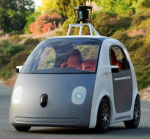 Google’s recent announcement that they would be unveiling a self-driving vehicle prototype soon spawned a lot of the reactions you’d expect from such an announcement, mostly split between “cold, dead hands”-type comments to outrageous hazard-challenges that would give Mario Andretti pause.
Google’s recent announcement that they would be unveiling a self-driving vehicle prototype soon spawned a lot of the reactions you’d expect from such an announcement, mostly split between “cold, dead hands”-type comments to outrageous hazard-challenges that would give Mario Andretti pause.
I’d hate to chalk it all up to just plain technophobia; however, we have seen this kind of denial about new technologies before—for instance, when the Horseless Carriage was first introduced—and the song seems to be the same, note for note, but with the addition of synthesizer quaver and a bit of traffic sound sampling to remind us that it’s 2014.
But we’ve seen automated cars in movies like Minority Report. I’ve written about them in my novel Sarcology. And although they’re not depicted as death machines in popular media, they are still thought of that way by the public. Why?
We know that many people don’t trust automation, because, well… it’s not perfect. It makes mistakes. And no one wants to think about mistakes being made in a car at 60 MPH. So, better to let a person drive, right?
Except for the fact that humans aren’t perfect, either. They make lots of mistakes behind the wheel, many of them caused by their own inability or disinterest in focusing on their driving a quarter-ton guided missile in a roadful of quarter-ton guided missiles, all piloted by humans not much more attentive than them. Automobile driving remains one of the most lethal things an American citizen can do, and most of that lethality can be directly attributed to driver error. Why aren’t they thinking about all those mistakes?
People also tend to think of “automation” as being some kind of human-analogous robot, with similar sensors and characteristics, that will be behind the wheel. Blame television and movies for this, perhaps; we rarely think of the automated systems in elevators, computers, cellphones, and even our existing cars, as robots, because they don’t have two arms, two legs and a bubble-head with flashing lights in it. Yet robots—automation—are all around us, making our daily lives easier in often invisible ways.
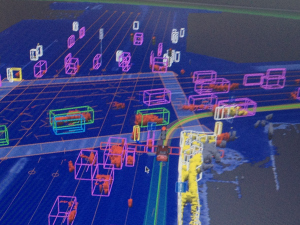 A self-driving car won’t simply have a Nikon camera bolted to its nose and aluminum arms to turn a steering wheel; it will encompass multiple environmental recognition and evaluation systems, ranging from visible sight, to radar, GPS, saved map data and (in most cases) signals from roadways and even other vehicles. It will parse all of those sources of data, evaluate their surroundings and possible hazards, and take appropriate action… and do all of that in milliseconds, versus the multiple seconds it would take a human to parse only visual data, come to a conclusion and take appropriate action.
A self-driving car won’t simply have a Nikon camera bolted to its nose and aluminum arms to turn a steering wheel; it will encompass multiple environmental recognition and evaluation systems, ranging from visible sight, to radar, GPS, saved map data and (in most cases) signals from roadways and even other vehicles. It will parse all of those sources of data, evaluate their surroundings and possible hazards, and take appropriate action… and do all of that in milliseconds, versus the multiple seconds it would take a human to parse only visual data, come to a conclusion and take appropriate action.
A self-driving car will know its limitations better than a driver would: Knowing how fast it can accelerate or (more importantly) brake… how much torque it can handle in a turn before flipping over… how much clearance it has to avoid an obstacle… and having the precise control over its systems to more accurately make those starts, stops and turns… will make it better than any human driver at avoiding hazards.
And finally, we have the technology to allow cars to actively network with each other, using radio signals to track each other’s movements, send reports of unexpected road conditions or traffic, broadcast collision alerts, or just synchronize with multiple vehicles to form autonomous convoys and safely maneuver through traffic.
I’m not sure why people have a problem with the idea of automation being faster and more precise then they are at sudden-decision action. The automobile’s engine is chock-full of robots controlling engine firing, cam timing, gear-shifting and even radio-station finding, accomplishing most of those very exacting tasks in microseconds.
People also tend to assume that these automation systems will simply fail, without warning, and (naturally) in the worst situation possible. People spin scenarios of self-driving cars expecting turns where there are none and swerving into walls, or taking you over a cliff to avoid a sudden obstacle… the kind of stuff you’d expect to see in a Saturday Night Live sketch or a cheesy sitcom or movie. Or they’ll just turn off, in the middle of a highway jaunt, leaving you screaming uncontrollably towards your doom.
Somehow, all of these people have forgotten about the concept of backup; emergency equipment designed to react to and recover from such situations. The very idea that a self-driving car would not be built with a backup system, independent of the main system, whose only job would be to take control of a car when the main system malfunctions and bring the vehicle to a safe stop, is crazy.
And there’s already the beginnings of just that in some new cars today: BMW, Mercedes and Hyundai models have systems that will take control of the car’s brakes and slow it to avoid collisions, doing so faster than human drivers can often react. Many vehicles can take control of the vehicle to steer it into parking spaces. Put the two existing systems together, and you have an emergency pull-over system.
The significant thing is that all of the technologies required to make a working autonomous vehicle are either available today, being perfected today, or already in use today. There’s no missing framistat or dilithium crystal needed to put all the pieces together; it’s just a matter of assembling them and optimizing them to do this job.
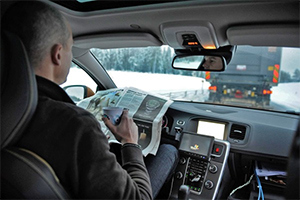 We have countless examples of jobs we used to do, now being safely done with automation, every day, every minute. There’s no reason to believe that self-driving cars won’t soon be in that category. So there must be something else convincing people that this is a bad idea.
We have countless examples of jobs we used to do, now being safely done with automation, every day, every minute. There’s no reason to believe that self-driving cars won’t soon be in that category. So there must be something else convincing people that this is a bad idea.
There’s a reason why people describe our relationship with the car as “America’s love affair”: For so many Americans, being able to drive is considered a special privilege, a joy (though where to enjoy driving in this country, outside of a racetrack, is beyond me) and a source of pride. It is tied into independence and adulthood, a socio-cultural milestone; it gives us full access to our automobile-dominated world. Cars have been romanticized, idolized and personalized. Some of us were born in them; probably more of us were conceived in them. Cars hold a special place in American culture, and it’s hard for Americans to imagine a world in which they do not drive their own cars.
But at one time, it was hard for average people to imagine a world in which they did not grow their own food on a daily basis… have access to doctors… know what was on the other side of the planet… or watched a man walk on the Moon from their living rooms.
And speaking of Moon landings: NASA’s Apollo computers had less processing power than you have in your cellphone today. Still think we can’t make cars drive themselves?


May 27, 2014
America: Still convinced our gun fetish is good?
 Welcome to the new photo you’ll find in the dictionary, listed under “misogynist entitled crazy whiny asshole prick whom we’re glad is no longer taking up space on our planet.”
Welcome to the new photo you’ll find in the dictionary, listed under “misogynist entitled crazy whiny asshole prick whom we’re glad is no longer taking up space on our planet.”
elliot rodger (whose name no longer deserves the honor of capitalization) is the latest in a string of people who have demonstrated a severe inability to handle normal life, lashing out because he’s upset that he hasn’t gotten laid. It’s days like this that I wish there was a God and heaven; because if there was, God himself would have met the boy at the pearly gates, and slapped him so hard in a downward direction that he wouldn’t have stopped falling until his eyeballs were burning. Forever and ever. AMEN.
But rodger is also the latest in a string of evidence that our national gun fetish is impractical, unworkable, unsupportable and downright dangerous to the majority of law-abiding, peace-loving Americans.
When a youth with clear signs of mental illness, troubled enough to be seeing a therapist and having acted out enough to cause police to visit him, can legally buy a gun in the United States, it is a clear sign of a system that is worse than broken, allowing anyone to obtain one of the most lethal tools ever invented by man.
The United States has let its gun ownership fetish outlive its sensibility. The words of the second amendment, clearly intended to speak to arming a militia against hostile governments (the very definition of the U.S. Armed Forces) has been perverted and twisted into convincing Americans that they all deserve access to and use of any gun they want.
The result: A nation full of guns, barely regulated and badly monitored, available to any milquetoast, racist, paranoid, thug and misogynist entitled crazy whiny asshole prick who wants one.
Americans want to defend themselves; I get that, we all do. But the gun is an offensive weapon, and more than any American should need to defend themselves. There are modern, nonlethal, defensive weapons that Americans can use to protect themselves, most notably taser technology. But an even greater protective tool is the government itself, armed with twenty-first century technology, and not afraid to use it.
We are in possession of technology that could locate 90% of the guns in (and entering) this country. A safety-driven mandate would give the government the right to confiscate and destroy every gun they could get their hands on. Severe fines and jail time could be placed on all gun use, and simple things like removing ammo from the market and placing more severe fines on owning ammo would render guns as so many museum pieces.
America can more extensively roll out public area surveillance systems, like those in major cities like London, but with additional sensors designed to detect guns, pinpointing firing locations in realtime based on sound and motion. Drones can make it easier to locate, follow and even bring down a gun wielder.
In the meantime, Americans can be legally issued tasers, already proven in the field to be effective at bringing down threats; Americans can be allowed by law to carry them on their person at all times, and given mandatory classes in their use.
We have a brand new spotlight on our outdated and unworkable gun situation, based around our perversion of 200-year-old laws. Ask the UK if it’s a good idea to take guns out of the hands of citizens… how many lives it will save… how much safer their country is. Then ask Australia. Then China (who has the death penalty for gun ownership).
There’s no question that it’s time to make a change. It’s time to bring America into the 21st century with its gun laws. Let’s end America’s gun fetish now.


May 26, 2014
Orbiting habitat design

Bryan Versteeg, spacehabs.com
I love this habitat design, and this shot. It’s very similar in design to what I specified for the satellite Verdant (in Verdant Skies), with the exception that Verdant was longer than it was in diameter; this is more a drum, where Verdant was a cylinder.
The hubs feature balcony levels, which, in Verdant Skies, rotated independently so as to provide either 1G simulated gravity equal to the main interior, or varying degrees of lower gravity, right down to a full counter-rotation to create 0 gravity, for medical or research uses. It also features the “sun column,” the axis that bridges both sides of the hab and provides heat and light to the interior.


May 21, 2014
Next revision: Despite Our Shadows
 Despite Our Shadows, my sexy noir non-SF story, is the next novel to be upgraded. I’m on it right now, giving it the mandatory editing pass… and as I work, I’m discovering that I’m considering again the elements that constituted the major change in the first revision.
Despite Our Shadows, my sexy noir non-SF story, is the next novel to be upgraded. I’m on it right now, giving it the mandatory editing pass… and as I work, I’m discovering that I’m considering again the elements that constituted the major change in the first revision.
Originally titled Lambs Hide, Tigers Seek, this novel is about an investigator with women issues, being thrown into the goth and bondage scene in Nashville as he tracks a missing heiress.
When I first wrote the story, I was concerned about the sexual aspects of the book, and about pushing it too far into what would be considered “porn” territory. I didn’t want the book to be shut out of certain markets because of its content. A number of my other books similarly got the “kiss-kiss-cut-to-morning” treatment that I felt was appropriate for their content.
Years later, I reconsidered my decision. It occurred to me that I’d read many a novel over the years that had scenes with graphic, explicit and even X-rated content. The content of George R.R. Martin’s Wild Cards series comes immediately to mind: Not only were many of characters depicted “doing the nasty,” but in some cases, their powers directly depended on sex.
So, when I did revision 1 of the novel (and most of my others), I went back through the neutered sex scenes, and went ahead and put in more sexual detail. Not all books got a lot of extra material (if the book didn’t really call for it), but in the case of Lambs/Tigers, I felt the story needed the sex scenes to really emphasize what was going on with the main characters; the explicit content was vital to the story.
The content went in. To help mark the major alteration to the novel, I changed its title to Despite Our Shadows, gave it a new cover, and re-released it. I wish I could say customer feedback provided me with either confirmation or condemnation of my efforts… but in fact, the book hasn’t sold more than a few copies since its original release. So I got crickets.
And so here I am, revising the content again, and thanks to the underwhelming response from the first revision, I find myself wondering if I went too far… or if there was simply some other reason (like my pathetic marketing savvy—or the story itself, sex or no sex) for the book’s bombing.

The new cover to Despite Our Shadows?
My present state of mind is that the content stands as-is; and that I need better marketing to push this book. I’m altering the cover as well, and that will get a more striking treatment too.
But I’m not through with it yet. And before I finish, who knows? Maybe I’ll change it again. Maybe I’ll put tits on the cover. Maybe I’ll satirize 50 Shades of Grey. Maybe I’ll remove all the naughty bits and make it clean enough for Grandma to read.
Or maybe I’ll just update the contact information.


May 16, 2014
Time to move?
I just did this for fun: I thought the elements of the Verdant Skies cover would make a cool poster. I’m putting it on a T-shirt.
Interested? Take a look here.


May 14, 2014
Chasing elusive technologies
 In a continuation of my 2014 catalog revitalization, I have re-released Chasing the Light, with a redesigned cover and a fresh editing pass. I’ve also updated the dates referenced, since the years originally cited in the original 2008 novel have already reached us, and I wanted this novel to remain just a few years in our future.
In a continuation of my 2014 catalog revitalization, I have re-released Chasing the Light, with a redesigned cover and a fresh editing pass. I’ve also updated the dates referenced, since the years originally cited in the original 2008 novel have already reached us, and I wanted this novel to remain just a few years in our future.
Revisiting this novel caused me to think about so many of the technologies mentioned in the story: At the time of the original writing, these were technologies on the drawing board, and expected to be well into production, if not ready for sale, in just a few years; yet, six years after the original writing of this novel, these technologies have still not come to pass, or in most cases, have not even moved into preliminary production stages. What happened?
To be sure, many of the technologies mentioned have a direct connection with the novel’s central theme, the impact on the United States of a popular revolt against the oil companies’ constant efforts to stymie progress to a post-oil future. The novel opens with the first of The Oil Riots, with the public not only attacking the government for their bribery-based inaction, but going after known oil officials and employees for being directly responsible, or even partially complicit, in the corruption. The result of the Oil Riots is a series of changes in technology and transportation, based on existing and being-developed technologies that I researched when developing the novel.
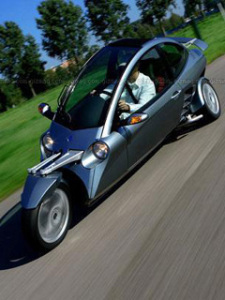 One of those changes was the introduction of many alternate modes of transportation, most of them electric-powered. Not only bicycles and scooters have become more commonplace, especially among the lower income segment, but three-wheeled single occupancy vehicles, or “trikes,” have become regular fixtures on American roads. Much like the vehicles in Sarcology, these trikes, and larger vehicles right up to transport trailers, can drive themselves, allowing a computer to do all the work and use the minimum amount of energy possible.
One of those changes was the introduction of many alternate modes of transportation, most of them electric-powered. Not only bicycles and scooters have become more commonplace, especially among the lower income segment, but three-wheeled single occupancy vehicles, or “trikes,” have become regular fixtures on American roads. Much like the vehicles in Sarcology, these trikes, and larger vehicles right up to transport trailers, can drive themselves, allowing a computer to do all the work and use the minimum amount of energy possible.
At the original time of writing, quite a few small ventures had been developing small vehicles, both gas-powered and electric, for most of a decade; I was anticipating at least a few of these vehicles being available to the public within 5 years, and more to come. Six years later, it’s as if all of the developing efforts were sealed in ice, with no hope of thawing any time soon.
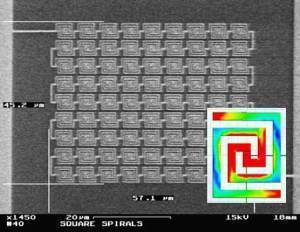 Other technologies being developed in 2008 included the solar-thermal antenna arrays that the character Tom Everson hopes to sell in America. Developed at Idaho National Laboratory, this very real technology is capable of being fitted to photovoltaic arrays and capturing the heat energy that would otherwise be wasted by standard photovoltaic cells (and which, when built up too greatly, actually diminish the efficiency of photovoltaic cells). A little bit of searching on the web reveals any number of improvements to photovoltaic systems, either additional layers of materials, cheaper substrates, more efficient manufacturing techniques and even cheaper overseas products, are being reported every day.
Other technologies being developed in 2008 included the solar-thermal antenna arrays that the character Tom Everson hopes to sell in America. Developed at Idaho National Laboratory, this very real technology is capable of being fitted to photovoltaic arrays and capturing the heat energy that would otherwise be wasted by standard photovoltaic cells (and which, when built up too greatly, actually diminish the efficiency of photovoltaic cells). A little bit of searching on the web reveals any number of improvements to photovoltaic systems, either additional layers of materials, cheaper substrates, more efficient manufacturing techniques and even cheaper overseas products, are being reported every day.
Yet—somehow—these technologies have languished, gone unreported, or become disgraced or disparaged, or taxed and tarriffed, leaving them either unknown, unpopular or unaffordable.
It’s almost as if there really is a conspiracy to block alternative energy systems, while making sure oil-based energy remains dominant. But that would be paranoid.
Right?
These days, it’s pretty hard to get Americans up in arms over anything; but it seems that the dysfunctional nature of our government, quite obviously allowing themselves to be swayed by special interests and transparent bribes to the point of deadlocking every issue and stubbornly maintaining the status quo, is coming closer to getting the people’s goat than any single issue. We’ve even had a few moments recently that have driven segments of the public to actively discuss marching on the Capital and taking action against the constant Congressional foot-dragging.
Of course, discussion is a long way from grabbing the torches and pitchforks and storming downtown. But as time goes by, I believe the possibility of its happening becomes greater and greater; and I suspect that all it will take is the right act, the last domino pushed over, to start the process.
Chasing the Light‘s premise is that the Oil Riots trigger the development of these technologies, fast-tracking them into our use and acceptance into our daily lives. In reality, I believed some, if not all of the technologies depicted, would not need a revolt to happen. On that note, maybe I was wrong.
If such a revolt took place, the chain of events depicted in Chasing the Light are one possible outcome. Maybe not the worst of possibilities; but if such events meant freeing up the logjam of alternative and efficient technologies, and giving us a better and cleaner world in the process… it would certainly be among the better outcomes.


May 6, 2014
Invasive technologies define the future of Sarcology
 Invasive technologies, by definition, tend to have the most initial resistance to their introduction to society. It can be hard to imagine a future world in which new and sometimes disturbing, often painfully-disruptive technologies come to be accepted, even common, parts of our lives.
Invasive technologies, by definition, tend to have the most initial resistance to their introduction to society. It can be hard to imagine a future world in which new and sometimes disturbing, often painfully-disruptive technologies come to be accepted, even common, parts of our lives.
Sarcology, recently updated and re-released, depicts a future world full of these invasive technologies, making it easy for the reader to question the likelihood and desirability of this future reality.
But given time, and often contrary to public perception, we have seen that even the most invasive of tech can overcome initial resistance and become accepted, even ubiquitous, in society.
Historically, people have shown a consistent pattern when it comes to new technologies, especially invasive ones like the automation and security systems that are a major part of the world of Sarcology. At first they are misunderstood and distrusted; paranoia and nostalgia often combine to assert that the old, well-understood ways are the best. People question the need for anything “better than what we have now,” and suggest the learning curve is too steep, the cost is too high, the effort to retool is too much of a bother, the return will be too low.
But when these technologies are put in place, they solve problems that went unsolved before, and people begin to see the real benefit to them. In cases where the improvements make a task easier, save money or, best yet, save lives, people slowly lose their initial resistance to the technology (especially when they are directly benefited); and if it performs well or returns benefits quickly, it can often be introduced to a larger segment of society by social or legal mandate. The U.S. has enacted many laws that mandate various industrial practices, healthcare procedures, vehicle safety equipment, construction techniques, etc, that have followed this line of technological development and put invasive technologies in place around us.
Automation, for instance, has accomplished a lot in modern society, and it hasn’t reached its wall yet. In Sarcology the advance of vehicle automation in America effectively stands in for the advances of automation in general. Personal vehicles are learning to do more and more of the process of driving, from monitoring speed, to braking, parking, hazard detection, and soon daily steering duties. Tomorrow, we’re looking at cars that can guide themselves along highways, join convoys of vehicles to save on fuel, and choose routes to our destinations to avoid traffic jams… all without human intervention.
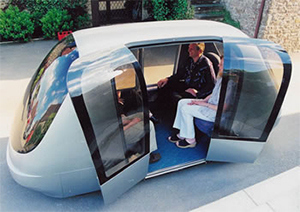 Though today’s driving “purists” cannot imagine relinquishing direct control of the car to automation—either out of a belief that no automated system can out-drive a human, or out of personal enjoyment of the driving process—we have a present environment of a vast majority of drivers who are not so accomplished at piloting a vehicle as they would like to believe, and who insist on carrying on distracting and control-limiting behaviors while behind the wheel (phone-talking, texting, eating, makeup-applying, newspaper-reading, etc); and they are causing more accidents and killing people in the process.
Though today’s driving “purists” cannot imagine relinquishing direct control of the car to automation—either out of a belief that no automated system can out-drive a human, or out of personal enjoyment of the driving process—we have a present environment of a vast majority of drivers who are not so accomplished at piloting a vehicle as they would like to believe, and who insist on carrying on distracting and control-limiting behaviors while behind the wheel (phone-talking, texting, eating, makeup-applying, newspaper-reading, etc); and they are causing more accidents and killing people in the process.
Automation is poised to take over driving duty, much more efficiently than most humans, and with no concern about distractions. In Sarcology, this frees up a car’s occupants to do whatever they want while the most critical task, driving, is handled by the vehicle itself. Motorists, now free to do other things, have come to see the value of self-driving vehicles, and are more than happy to let the car do all the work. And like other vehicle-related safety features, effective self-driving vehicles could find themselves legally mandated on public roads, as they are in Sarcology. (Impossible? Consider this: Many of us older drivers still remember the furor over mandating seatbelts in all cars, followed by the laws demanding they be worn at all times. With the successful deployment of self-parking car technology, the days of you parking your own car may already be numbered.)
Security and surveillance technology is also making significant inroads into modern life. In the television show Person of Interest, viewers are presented with a (fictional) computer that taps into all surveillance systems and aids the main characters in foiling crimes. In real life, the cameras installed in major metropolitan areas of cities like London and Baltimore similarly protects citizens from violent crime.
 Though no one really wants to think that someone (or some computer) is constantly looking over their shoulder, I’d argue that the first time the system saves individuals from violent crimes, or warns them in time to escape a disaster or avoid a dangerous location, the system will have proven itself and gained acceptance by those under its watch. Today the public argues much less about the presence of those cameras; they’ve come to accept and even welcome them. As other cities are rolling out similar camera monitoring systems to protect its populace, we can expect to see the same initial resistance, followed by acceptance when crime or loss of life takes a significant fall.
Though no one really wants to think that someone (or some computer) is constantly looking over their shoulder, I’d argue that the first time the system saves individuals from violent crimes, or warns them in time to escape a disaster or avoid a dangerous location, the system will have proven itself and gained acceptance by those under its watch. Today the public argues much less about the presence of those cameras; they’ve come to accept and even welcome them. As other cities are rolling out similar camera monitoring systems to protect its populace, we can expect to see the same initial resistance, followed by acceptance when crime or loss of life takes a significant fall.
Sarcology likewise features a network of camera security systems in place to aid law enforcement agencies and deter crime. Safety and protection will also be behind the use of more effective security systems, including biometric ID systems to safeguard our homes, workplaces and property. Biometrics have been of only limited use so far, because present systems generally only capture superficial data like a fingerprint, and can often be fooled or bypassed (though perhaps not as simply as television and movies would have you believe); and more effective systems are significantly expensive. But more detailed, harder-to-spoof scans of the body’s interior and autonomous functions will be much better able to guarantee our identities, and those are just around the corner.
In most areas of Atlanta, where the story takes place, citizens don’t think twice about these camera and biometric systems, as they help protect their daily lives. The story does, however, admit to a concession for those who inevitably resist such progress, even in the face of better security, for the perceived benefit of greater freedom: The city has designated areas that legally forgo the presence of cameras and other security devices, allowing those who prefer it to avoid the technologies they reject in favor of freedom of privacy. Although I don’t think it would be a good long-term solution, I’d bet money on the concept being experimented with in at least limited venues, right up to entire parts of town.
Sarcology also features Unmanned Aerial Vehicles (UAVs) and other robotic drones, used for security and for delivery duties. Author Michael Crichton also embraced a future of ubiquitous robotic servants and drones, in his movie Runaway (certainly not the best-executed Crichton vehicle, but still worth watching for its overall premise); he saw robots and automated systems as one day becoming commonplace, and no more unusual than we’d consider a roomba today.
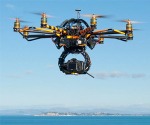 Although the use of drones is presently limited to government access, private companies are already testing the idea of using UAVs for local security and for tasks like delivery duties. Presently the public is heavily concerned that UAVs will create breaches of privacy by penetrating private properties and recording citizens in private activities; but as these concerns will most likely result in authorities writing up access and usage laws and other limitations designed to protect privacy, it’s likely that some private companies and even individuals will eventually have the right to use UAVs in public spaces under strict limitations or licensing for certain activities. Then, once they prove their worth in protecting property and providing services, such as point-to-point delivery of goods and services, their use will increase and the public will get used to drones’ being part of our daily lives.
Although the use of drones is presently limited to government access, private companies are already testing the idea of using UAVs for local security and for tasks like delivery duties. Presently the public is heavily concerned that UAVs will create breaches of privacy by penetrating private properties and recording citizens in private activities; but as these concerns will most likely result in authorities writing up access and usage laws and other limitations designed to protect privacy, it’s likely that some private companies and even individuals will eventually have the right to use UAVs in public spaces under strict limitations or licensing for certain activities. Then, once they prove their worth in protecting property and providing services, such as point-to-point delivery of goods and services, their use will increase and the public will get used to drones’ being part of our daily lives.
Sarcology’s future of ubiquitous automation even extends to humanoid Semi-Autonomous Robots—SARs—remotely “piloted” by human operators and intended to be deployed in hazardous situations. Again, technology that effectively saves lives, such as in war fronts, construction areas or other dangerous environments, can be expected to take on regular duties in society once they have proven their worth.
These SARs are highly sophisticated, and a prototype is considered valuable proprietary technology, leading to an attempt to steal its secrets. But an accident causes the prototype to develop beyond its expected design; not only does it become as independent as any human, but its status as an independent entity, and whether it can be considered equivalent to any human, comes under question.
As incredible as the development of automation and security systems are, the development of artificial intelligence being applied to these and other systems threatens to be the most invasive technology of all, for it will eventually come into direct competition with the human mind itself. We should expect autonomous systems combined with artificial intelligence to develop so far that we’ll eventually have to question the real difference between those automated devices and humans.
And when we get used to the idea of artificial humans living among us… that will be the biggest game-changer of all.


Invasive technologies drive Sarcology
 Invasive technologies, by definition, tend to have the most initial resistance to their introduction to society. It can be hard to imagine a future world in which new and sometimes disturbing, often painfully-disruptive technologies come to be accepted, even common, parts of our lives.
Invasive technologies, by definition, tend to have the most initial resistance to their introduction to society. It can be hard to imagine a future world in which new and sometimes disturbing, often painfully-disruptive technologies come to be accepted, even common, parts of our lives.
My latest novel, Sarcology, depicts a future world full of these invasive technologies, making it easy for the reader to question the likelihood and desirability of this future reality.
But given time, and often contrary to public perception, we have seen that even the most invasive of tech can overcome initial resistance and become accepted, even ubiquitous, in society.
Historically, people have shown a consistent pattern when it comes to new technologies, especially invasive ones like the automation and security systems that are a major part of the world of Sarcology. At first they are misunderstood and distrusted; paranoia and nostalgia often combine to assert that the old, well-understood ways are the best. People question the need for anything “better than what we have now,” and suggest the learning curve is too steep, the cost is too high, the effort to retool is too much of a bother, the return will be too low.
But when these technologies are put in place, they solve problems that went unsolved before, and people begin to see the real benefit to them. In cases where the improvements make a task easier, save money or, best yet, save lives, people slowly lose their initial resistance to the technology (especially when they are directly benefited); and if it performs well or returns benefits quickly, it can often be introduced to a larger segment of society by social or legal mandate. The U.S. has enacted many laws that mandate various industrial practices, healthcare procedures, vehicle safety equipment, construction techniques, etc, that have followed this line of technological development and put invasive technologies in place around us.
Automation, for instance, has accomplished a lot in modern society, and it hasn’t reached its wall yet. In Sarcology the advance of vehicle automation in America effectively stands in for the advances of automation in general. Personal vehicles are learning to do more and more of the process of driving, from monitoring speed, to braking, parking, hazard detection, and soon daily steering duties. Tomorrow, we’re looking at cars that can guide themselves along highways, join convoys of vehicles to save on fuel, and choose routes to our destinations to avoid traffic jams… all without human intervention.
 Though today’s driving “purists” cannot imagine relinquishing direct control of the car to automation—either out of a belief that no automated system can out-drive a human, or out of personal enjoyment of the driving process—we have a present environment of a vast majority of drivers who are not so accomplished at piloting a vehicle as they would like to believe, and who insist on carrying on distracting and control-limiting behaviors while behind the wheel (phone-talking, texting, eating, makeup-applying, newspaper-reading, etc); and they are causing more accidents and killing people in the process.
Though today’s driving “purists” cannot imagine relinquishing direct control of the car to automation—either out of a belief that no automated system can out-drive a human, or out of personal enjoyment of the driving process—we have a present environment of a vast majority of drivers who are not so accomplished at piloting a vehicle as they would like to believe, and who insist on carrying on distracting and control-limiting behaviors while behind the wheel (phone-talking, texting, eating, makeup-applying, newspaper-reading, etc); and they are causing more accidents and killing people in the process.
Automation is poised to take over driving duty, much more efficiently than most humans, and with no concern about distractions. In Sarcology, this frees up a car’s occupants to do whatever they want while the most critical task, driving, is handled by the vehicle itself. Motorists, now free to do other things, have come to see the value of self-driving vehicles, and are more than happy to let the car do all the work. And like other vehicle-related safety features, effective self-driving vehicles could find themselves legally mandated on public roads, as they are in Sarcology. (Impossible? Consider this: Many of us older drivers still remember the furor over mandating seatbelts in all cars, followed by the laws demanding they be worn at all times. With the successful deployment of self-parking car technology, the days of you parking your own car may already be numbered.)
Security and surveillance technology is also making significant inroads into modern life. In the television show Person of Interest, viewers are presented with a (fictional) computer that taps into all surveillance systems and aids the main characters in foiling crimes. In real life, the cameras installed in major metropolitan areas of cities like London and Baltimore similarly protects citizens from violent crime.
 Though no one really wants to think that someone (or some computer) is constantly looking over their shoulder, I’d argue that the first time the system saves individuals from violent crimes, or warns them in time to escape a disaster or avoid a dangerous location, the system will have proven itself and gained acceptance by those under its watch. Today the public argues much less about the presence of those cameras; they’ve come to accept and even welcome them. As other cities are rolling out similar camera monitoring systems to protect its populace, we can expect to see the same initial resistance, followed by acceptance when crime or loss of life takes a significant fall.
Though no one really wants to think that someone (or some computer) is constantly looking over their shoulder, I’d argue that the first time the system saves individuals from violent crimes, or warns them in time to escape a disaster or avoid a dangerous location, the system will have proven itself and gained acceptance by those under its watch. Today the public argues much less about the presence of those cameras; they’ve come to accept and even welcome them. As other cities are rolling out similar camera monitoring systems to protect its populace, we can expect to see the same initial resistance, followed by acceptance when crime or loss of life takes a significant fall.
Sarcology likewise features a network of camera security systems in place to aid law enforcement agencies and deter crime. Safety and protection will also be behind the use of more effective security systems, including biometric ID systems to safeguard our homes, workplaces and property. Biometrics have been of only limited use so far, because present systems generally only capture superficial data like a fingerprint, and can often be fooled or bypassed (though perhaps not as simply as television and movies would have you believe); and more effective systems are significantly expensive. But more detailed, harder-to-spoof scans of the body’s interior and autonomous functions will be much better able to guarantee our identities, and those are just around the corner.
In most areas of Atlanta, where the story takes place, citizens don’t think twice about these camera and biometric systems, as they help protect their daily lives. The story does, however, admit to a concession for those who inevitably resist such progress, even in the face of better security, for the perceived benefit of greater freedom: The city has designated areas that legally forgo the presence of cameras and other security devices, allowing those who prefer it to avoid the technologies they reject in favor of freedom of privacy. Although I don’t think it would be a good long-term solution, I’d bet money on the concept being experimented with in at least limited venues, right up to entire parts of town.
Sarcology also features Unmanned Aerial Vehicles (UAVs) and other robotic drones, used for security and for delivery duties. Author Michael Crichton also embraced a future of ubiquitous robotic servants and drones, in his movie Runaway (certainly not the best-executed Crichton vehicle, but still worth watching for its overall premise); he saw robots and automated systems as one day becoming commonplace, and no more unusual than we’d consider a roomba today.
 Although the use of drones is presently limited to government access, private companies are already testing the idea of using UAVs for local security and for tasks like delivery duties. Presently the public is heavily concerned that UAVs will create breaches of privacy by penetrating private properties and recording citizens in private activities; but as these concerns will most likely result in authorities writing up access and usage laws and other limitations designed to protect privacy, it’s likely that some private companies and even individuals will eventually have the right to use UAVs in public spaces under strict limitations or licensing for certain activities. Then, once they prove their worth in protecting property and providing services, such as point-to-point delivery of goods and services, their use will increase and the public will get used to drones’ being part of our daily lives.
Although the use of drones is presently limited to government access, private companies are already testing the idea of using UAVs for local security and for tasks like delivery duties. Presently the public is heavily concerned that UAVs will create breaches of privacy by penetrating private properties and recording citizens in private activities; but as these concerns will most likely result in authorities writing up access and usage laws and other limitations designed to protect privacy, it’s likely that some private companies and even individuals will eventually have the right to use UAVs in public spaces under strict limitations or licensing for certain activities. Then, once they prove their worth in protecting property and providing services, such as point-to-point delivery of goods and services, their use will increase and the public will get used to drones’ being part of our daily lives.
Sarcology’s future of ubiquitous automation even extends to humanoid Semi-Autonomous Robots—SARs—remotely “piloted” by human operators and intended to be deployed in hazardous situations. Again, technology that effectively saves lives, such as in war fronts, construction areas or other dangerous environments, can be expected to take on regular duties in society once they have proven their worth.
These SARs are highly sophisticated, and a prototype is considered valuable proprietary technology, leading to an attempt to steal its secrets. But an accident causes the prototype to develop beyond its expected design; not only does it become as independent as any human, but its status as an independent entity, and whether it can be considered equivalent to any human, comes under question.
As incredible as the development of automation and security systems are, the development of artificial intelligence being applied to these and other systems threatens to be the most invasive technology of all, for it will eventually come into direct competition with the human mind itself. We should expect autonomous systems combined with artificial intelligence to develop so far that we’ll eventually have to question the real difference between those automated devices and humans.
And when we get used to the idea of artificial humans living among us… that will be the biggest game-changer of all.






